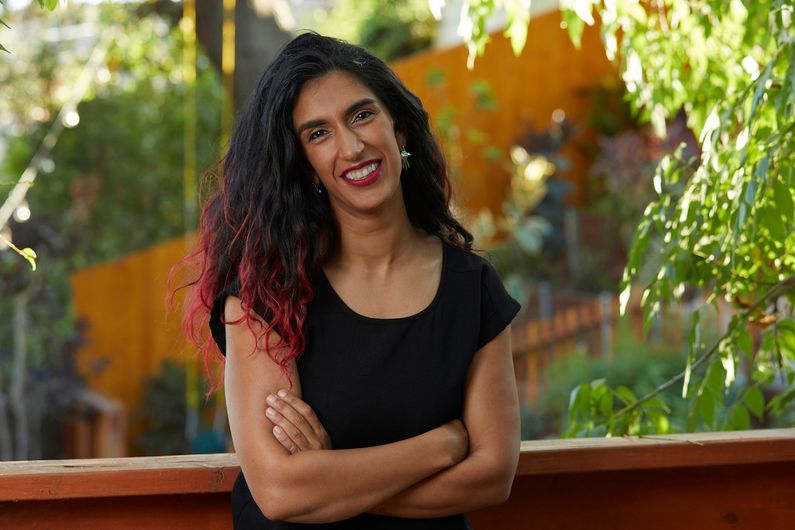Five questions for scientist Farah Alibay
- UdeMNouvelles
02/07/2022
- Mylène Tremblay
At the NASA Jet Propulsion Laboratory, star engineer Farah Alibay is part of the team piloting the Perseverance rover on Mars.
Alibay’s official mission is to search for signs of life, collect samples and bring them back to Earth to give us more information about the Red Planet. Her unofficial mission is to encourage women and minorities to go into the sciences. We reached her in sunny Los Angeles.
You enjoy sharing your passion for your work and showing girls that they can live their dreams. What motivates you?
People underestimate how important it is for girls to have female role models, and female mentors later on. When I was nine, I dreamed of being an astronaut. I lived in Joliette, Quebec, and I would hear about the men in Houston who were sending objects into space. But in the movies, I never saw anyone who looked like me, a racialized woman, in engineering. To me, it was science fiction!
In science, technology, engineering and mathematics (STEM), what you learn in school doesn’t necessarily work in the labour market. It’s great to want to work at NASA, but how do you get there? The first step is to find people you can identify with. My role models were two women astronauts, Canada’s Julie Payette and Mae Jemison in the United States.
You serve as a mentor both in your community and at work. What kind of role model are you?
I volunteer with Big Brothers Big Sisters of Greater Los Angeles. The girl who’s been my Little Sister for the past six years is interested in science. She’s proud to tell her friends that we shoot the breeze in my car and that I take her to work. It’s something that brings me joy. I also volunteer with the Court Appointed Special Advocates program, helping children navigate the foster care system.
At work, I mentor young women engineers in a structured mentoring program. And we also chat over coffee, I ask them questions. I try to give them what I wish I’d had at the start of my career. They appreciate it and it helps them learn the ropes more quickly. Mentoring benefits everybody.
With your red hair and laid-back style, you don’t match the traditional image of a scientist. What message are you trying to send?
I want to show that you can stay true to yourself and be comfortable in your own skin. I started dyeing my hair when I was 16. I have tattoos. At the start of my career, I thought it might be a problem. But once I was in, I started dyeing my hair again. I do still get some annoying comments from people who think red hair doesn’t look professional on an engineer. I tell them I can look any way I want and still be a fantastic engineer. That’s the message I want to send.
Is there still sexism in the sciences in 2022?
When I started working at NASA’s Jet Propulsion Laboratory eight years ago, nobody talked about racism or sexism. I was experiencing problems on one of my projects and people told me, “Come on, Farah, this is 2014, sexism is a thing of the past!” I often felt I was being treated differently—not given credit for my work, people asking my colleagues questions they should have been asking me, and so on. It’s hard to deal with those kinds of macroaggression because people think it’s all in your head. But yes, the boys’ club still exists!
That’s why structured mentoring is so important. Until recently, women would mentor each other informally. It was all about who you knew: peers would get together, go out for a meal or a drink, and talk about their jobs. It wasn’t equal opportunity. But the emergence of Lean In Circles [small groups of women who meet regularly to learn from each other and support each other] raised people’s consciousness. A structured mentoring system was established to give everyone an opportunity. Many companies also set up employee resource groups—for women, members of the Black, Asian or LGBTQ+ communities, and so forth. For me, this was a big help.
What’s making you happy at work right now?
I’m doing things that nobody has ever done before, which is extraordinary. I’m being paid to explore! Outside of work, what gives me energy is talking about my life experiences with young people and the not-so-young. It’s wonderful to see people take an interest in science. I find it very exciting!












